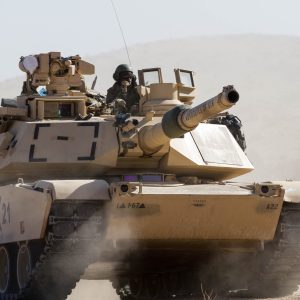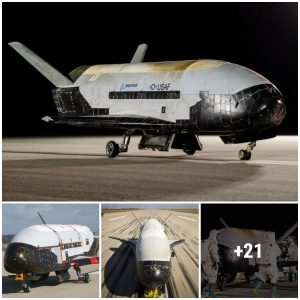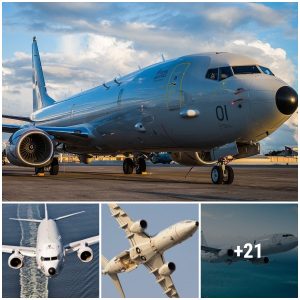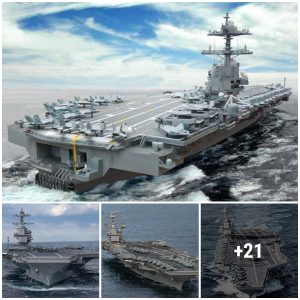Developed in the 1980s and entering service in the U.S. Air Force from 1997, the B-2 Spirit was the last class of Western bomber aircraft produced and the first one built around a radar cross section reducing stealth design.

U.S. Air Force B-2 Spirit Flying Wing Stealth Bombers
The aircraft was deigned to be able to deliver strategic nuclear strikes against the Soviet Union and its Warsaw Pact allies in the event that the Cold ധąɾ escalated into a ‘hot’ open conflict. With the Soviet air defence network considered the most advanced in the world, and the country deploying a range of state of the art anti aircraft systems from S-300 and S-200 long range missile batteries to MiG-31 Foxhound interceptors with the world’s first phased array radars, the ability of older non-stealthy B-52H and B-1B bombers to penetrate sufficiently deep into Soviet airspace was highly questionable.

The U.S. had first invested in developing fast bombers which could outrun Soviet air defences, with the B-70 Valkyrie able to fly attack missions at Mach 3 speeds and at high altitude. This program was cancelled as the Soviet Military began to field even faster aircraft and surface to air missiles which made the B-70’s extreme price hard to justify.
B-70 Valkyrie Mach 3 Bomber Prototype
The U.S. moved to focus on low altitude penetration to achieve what high speed and high altitude aircraft could not, as when aircraft flew at lower altitudes radar systems’ detection ranges an the firing ranges of surface to air missiles were drastically reduced. Although the B-1B bomber was built around requirements for such missions, this too would prove short lived as an effective strategy.

The Soviet Union not only began to deploy handheld surface to air missiles in large numbers which were ideally suited to neutralising low flying aircraft, but look-down shoot-down radars on its MiG-31 and upgraded MiG-25PD fourth generation interceptors left such bombers highly vulnerable. The solution was to develop aircraft which, even at high altitude, Soviet radars would struggle to lock on to, which would be achieved by using stealth technologies. Although the F-117 strike fighter was the first to be built around a stealth airframe, the B-2 Spirit was a far more ambitious program.

MiG-31M Foxhound with Zaslon M Radar
The B-2 made use of a large flying wing design which, unlike the F-117 or the later F-22 or F-35, was far more difficult to detect for long wave radars. The aircraft could carry several times the payload of any other stealth aircraft meaning it was ideal for delivering heavy strategic nuclear warheads – where the F-117 and later F-35 were restricted to deploying small tactical nuclear warheads such as the B61. Despite its unrivalled stealth capabilities for its time, the Soviets’ demonstrated capability to produce world leading radar technologies led to concerns that the new bomber would quickly see its stealth capabilities compromised.

An example was the development of the massive Zaslon-M radar for a new generation of MiG-31M interceptors which was scheduled to enter service shortly before the B-2, with interceptor squadrons able to share data from their sensors and thus better locate stealth targets at long distances. As a result the Air Force instructed the B-2’s developer Northrop Grumman to add a low level flying capability similar to that of the B-1B.

U.S. Air Force B-2 Spirit Flying Wing Stealth Bombers
While it had previously been intended as a purely high flying strategic bomber, the move to give the B-2 a low altitude capability like that of the B-1B proved detrimental to the program. It not only increased the cost of the already expensive bomber, but design changes force Northrop to make the B-2 less stealthy from certain aspects and against certain radar wavelengths – in particular against longer wavelengths from the rear. Perhaps more importantly, these changes also added weight, substantially lowered the bomber’s altitude ceiling and increased operational costs and maintenance requirements as the aircraft became much more complex.

This change to the design ultimately provided few improvements to the B-2’s capabilities, and if anything undermined them as the now more complex and higher maintenance aircraft could fly less often and required significantly more maintenance for every hour in the air. Low altitude penetration ultimately turned out to be an obsolete capability for a stealth bomber where it would if anything be much more vulnerable than at high altitudes due to further advances in Soviet air defence technologies.

U.S. Air Force B-2 Spirit Drops GBU-57 Bomb
With a cost of over $2 billion per aircraft, a very delicate airframe and extremely high maintenance requirements, the B-2 program was ultimately cut from 120 aircraft to just 20 – plus a prototype modified for combat operations to bring the fleet size to 21. The bomber is still heavily relied on to deliver ωεɑρσռs such as GBU-57 penetrative bombs which are too heavy for any other stealth aircraft to carry – and which are critical for penetrating fortified targets such as Iranian and North Korean nuclear facilities and missile storage facilities.

Issues with the B-2 have ultimately meant that the bomber will likely be retired before the end of the 2030s, while the older Vietnam ധąɾ era B-52H remains in service alongside the newer B-21 – an aircraft which also uses a flying wing design but is expected to be much cheaper and easier to maintain and will not have a low altitude penetration capability.





